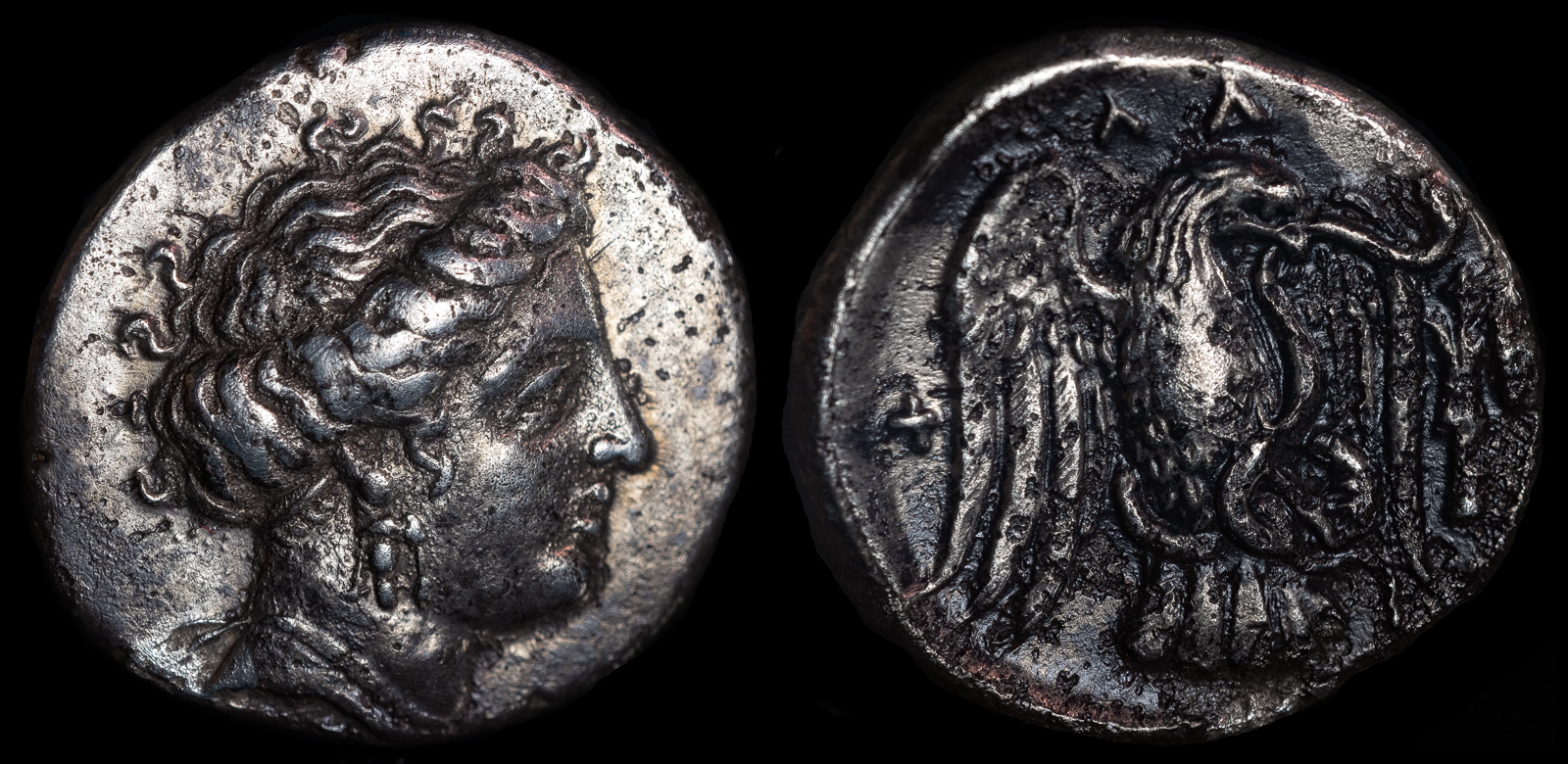
Euboia, Chalkis
Circa 290-271 BCE
AR Drachm 3.56g, 17mm, 1h
Head of the nymph Chalkis to right
Eagle flying to upward, clutching serpent in beak and talons; XAΛ around, trophy to right.
Picard 26; BCD Euboia 171; HGC 4, 1464
Ex Olav E. Klingenberg Collection
Ex Roma
Chalkis was one of the most ancient cities of (sort of) mainland Greece. It was near here that the Greek ships set out for the Trojan War, per Homer. Its colonists later founded a number of important cities, such as Naxos (which I’d thought was settled from the island of Naxos) and Rhegion.
Chalkis supposedly tcakes its name from Halkos, which is the Greek word for copper, though we haven’t found any evidence of copper mines there. Maybe they just liked the metal. On other accounts, they were named for the nymph Chalkis, who is depicted on this coin. She was a daughter of Asopos, who legend has founded the island of Euboia, on which Chalkis lies.
Much of its history is taken with its competition with its neighbor Eretria, with whom they fought a war and evidently defeated so well that Eretria didn’t mint coinage during the Hellenistic era.
The reverse of this coin depicts on eagle grabbing a serpent. This symbol has an interesting history since it’s migrated across many cultures. For example, today it’s on Mexico’s flag. Eagles depicted with snakes have been around at least since Babylonian times, so the Euboians were by far not the innovators here. Similar depictions have been found in ancient works from India and New Zealand, so it was likely invented separately by different cultures.
That being said, the Greek image seems to be the most similar to the modern representation, so it’s the most familiar.
Chalkis is defeated by Athens in the Battle of Chalkis. As a result, Athens takes control of much of Euboea’s land and imposes a tribute on the city.
August 7
September 26
Aegina plays a significant role in the Greek naval victory against the Persian Empire in the Battle of Salamis. Byblos, Arados, Tyre, Halikarnassos under Artemisia, Kos, and Sidon support Darius. Chalkis and Kythnos support the Greek effort. Alexander I serves as a peace negotiator on behalf of the Persians.
Pleistarchos serves as garrison commander in Chalkis.
Chalkis used as a base by Antiochos III for invading Greece.
Chalkis is used by Mithridates VI for invading Greece.